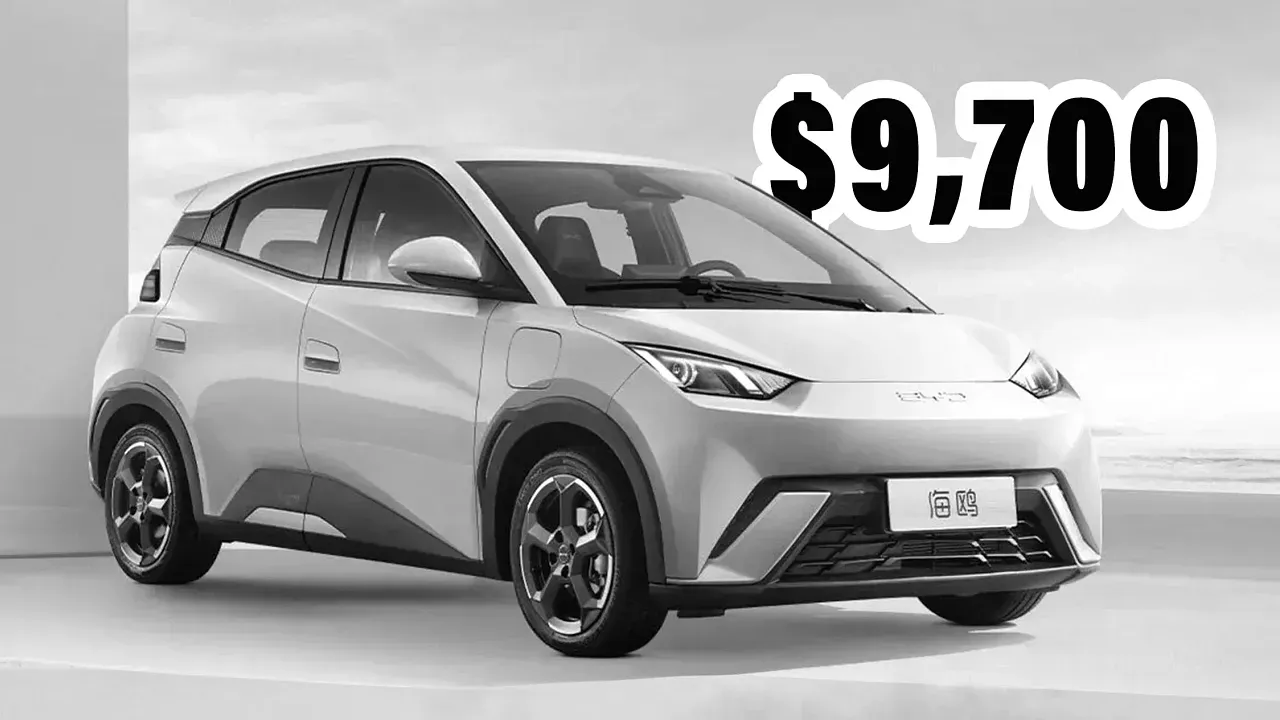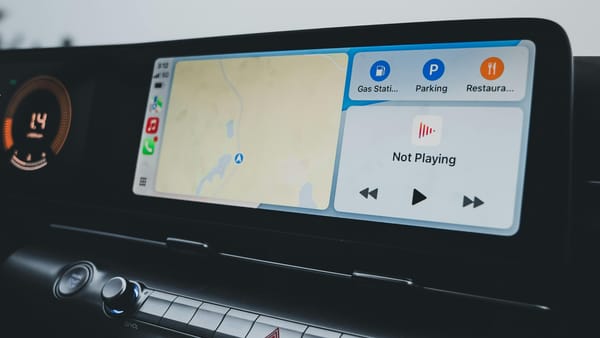In China, the BYD Seagull sells for less than $10,000. It comes equipped with a modern infotainment system, an industry-leading Blade battery, and build quality comparable to mainstream Western EVs. It’s not a prototype. It’s in production, on the road, and headed for export markets across Asia, the Middle East, Latin America, and eventually, everywhere but the United States.
Most Americans have never seen a BYD in person. They probably won’t anytime soon. A wall of tariffs has kept Chinese EVs out of the U.S. market, for now. But that hasn’t stopped BYD from becoming the world’s top-selling electric vehicle brand, surpassing Tesla in annual sales. And it hasn’t stopped its cars from setting a new global price floor for what an EV can cost—and still be good.
This isn’t a story about cheap cars for developing markets. It’s about a redefinition of value that’s already altering the competitive logic of the automotive supply chain.
Western OEMs still depend on sprawling supplier networks.
BYD does not.
It manufactures most of its key components in-house, from batteries and chips to motors and displays. It owns parts of the mines that feed its battery plants. It writes its own software. It even operates its own fleet of car-carrier ships.
That kind of control reshapes the economics of the entire EV stack. And for U.S.-based parts and technology providers, it raises a direct strategic question:
What happens when the global benchmark for an electric vehicle is set at $10,000—and you’re not part of the equation?
Coming Soon: Monthly Deep-Dive (for Paid Subscribers only)
Competing With BYD’s $10K EV Strategy
BYD’s Redefinition of Value
For years, Chinese automakers (BYD included) were dismissed as makers of cheap, unreliable knockoffs.
That era is over.
BYD now produces electric vehicles that match or exceed the quality of leading Western brands in design, technology, and safety. Its proprietary Blade Battery is considered one of the safest and most cost-efficient in the industry. Toyota and Tesla have both incorporated it into select models. In 2024, BYD unveiled an autonomous driving system it claims rivals Tesla’s and demonstrated fast-charging technology capable of refueling in five minutes.

But it's not just about features. The real shift is in how BYD builds.
Unlike most global automakers who rely heavily on external suppliers, BYD is almost entirely vertically integrated. It manufactures its own semiconductors, electric motors, display screens, and powertrains. It controls software development in-house. It owns shares in upstream mining operations. It handles its own global logistics.
This structure is efficient and defensive. It compresses the cost base, accelerates innovation cycles, and gives the company tight control over quality and margins. And it’s what enables BYD to sell EVs at one-third the price of comparable U.S. models, without sacrificing competitiveness.
The result is a redefinition of what “value” means in the automotive market. It's no longer just range, features, and badge. It’s the ability to deliver all of that at a radically lower cost.
That’s the part of the story many in the U.S. still underestimate. They see a pricing gap. What they’re missing is a business model gap.
The Margin Collapse Risk for U.S. Suppliers
The U.S. automotive supply chain was built for scale. For decades, Tier 1 and Tier 2 suppliers optimized for incremental innovation, cost-sharing across long product cycles, and predictable demand from a small set of dominant OEMs. In that model, price compression could be managed with volume, and differentiation came from engineering complexity.
BYD doesn’t play by those rules. It makes the parts other automakers outsource. It controls the inputs. It ships on its own terms. And most importantly, it does this at a level of vertical integration that threatens entire categories of components, and the companies that make them.
When one company builds its own battery cells, writes its own operating system, designs its own semiconductors, and eliminates the traditional markup layers that keep suppliers in business, the margin structure of the industry shifts. And while tariffs may keep BYD vehicles off American roads for now, they don’t shield U.S.-based suppliers from the consequences of this shift.
As BYD and other Chinese manufacturers expand into Latin America, Southeast Asia, and the Middle East, they bring with them a supply model that excludes the traditional Western value chain. The risk isn’t just lost sales. It’s obsolescence in the very emerging markets where high growth is possible.
Parts and technology executives know how quickly a “cost-down” request can eat into profits. What’s coming isn’t a request but a new benchmark.
The question now is whether U.S. suppliers are prepared to reframe their value in a world where a full-featured EV can be profitably sold for $10,000, and not a single component came from them.
Strategic Options
For U.S. parts and technology suppliers, the threat is exclusion.
BYD’s model doesn’t leave much room for traditional Tier 1 or Tier 2 partnerships. Its internal control over batteries, semiconductors, software, and logistics reduces the scope for external contribution. But that doesn’t mean there are no plays left.
In markets where BYD is expanding: Brazil, Thailand, the UAE, fleet buyers and public entities are setting procurement priorities based on cost, availability, and durability, not brand loyalty or legacy partnerships. That creates openings for suppliers who can adapt fast enough to become relevant in this new frame.
What does adaptation look like?
- Platform Flexibility: Products and modules that are plug-and-play across multiple EV architectures. Not just those built for U.S. or European OEMs.
- Localization Readiness: Capacity to support regional assembly, testing, and compliance in fast-growing EV import markets.
- Cost Structure Realism: Willingness to revisit margin expectations, material sourcing, and design complexity to stay within reach of the new global price floor.
- Use-Case Focus: Shifting from prestige-based features to fleet-grade durability, charging simplicity, and lifecycle cost advantage.
None of these moves are easy. But the strategic mistake would be assuming that the disruption is years away or geographically constrained.
The arrival of sub-$10,000 EVs isn’t a distant threat. It’s a present shift in the global automotive value equation. BYD has demonstrated that it can deliver quality, scale, and innovation at price points Western suppliers once considered impossible. That new baseline is now shaping buyer expectations, platform strategies, and competitive positioning far beyond China’s borders.
Emerging Strategy works with automotive parts and technology providers to identify early demand signals, map competitor activity in export markets, and pressure-test product strategies against global cost floor disruptions. If your team is reassessing its position in a rapidly shifting value chain, we can help clarify what’s coming—and what to do about it.
Coming Soon: Monthly Deep-Dive (for Paid Subscribers only)
Competing With BYD’s $10K EV Strategy
We’re currently developing a strategic report that breaks down the implications of BYD’s ultra-low-cost electric vehicles. Here’s what it will cover:
Section 1: The Product and Price Breakthrough
- A detailed look at BYD’s lowest-cost EVs available in China and abroad, including specifications, pricing, and market rollout.
- Engineering and manufacturing strategies enabling BYD to profitably sell EVs under $10,000.
- Comparative analysis with entry-level EV offerings from U.S., Korean, Japanese, and European automakers.
Section 2: Global Penetration Strategy
- Mapping BYD’s current and planned market entries across Latin America, Southeast Asia, the Middle East, Africa, and Europe.
- Export strategies, including shipping logistics, local assembly, and regulatory navigation.
- Review of tariff barriers and trade dynamics in key target markets.
- Assessment of BYD’s focus on fleets, ride-hailing platforms, and cost-sensitive rural segments.
Section 3: Strategic Implications for U.S. Suppliers
- Impact of BYD’s vertical integration on traditional Tier 1 and Tier 2 supplier roles.
- Categories of components most vulnerable to cost compression or elimination.
- Consequences for pricing power, feature differentiation, and platform co-development assumptions.
Section 4: Market Demand Signals and Adoption Curves
- Regional breakdown of where demand for sub-$15K EVs is accelerating fastest.
- Adoption patterns and price elasticity across India, Brazil, Mexico, Indonesia, and South Africa.
- Case examples of government and fleet adoption of low-cost Chinese EVs.
Section 5: Competitive and Strategic Responses
- OEM responses to the BYD threat, including planned low-cost models and accelerated timelines.
- Known plans from Tesla, Hyundai, VW, and others targeting the sub-$20K EV segment.
- Insights from recent earnings calls, investor briefings, and roadmaps addressing Chinese competition.
Section 6: Quotes, Data, and Strategic Framing
- Key quotes from industry leaders, analysts, and policymakers on the competitive threat posed by BYD.
- Framing data and narrative elements for supplier executives recalibrating their product and market strategies.
- Early indicators of shifts in buyer expectations and procurement priorities.







